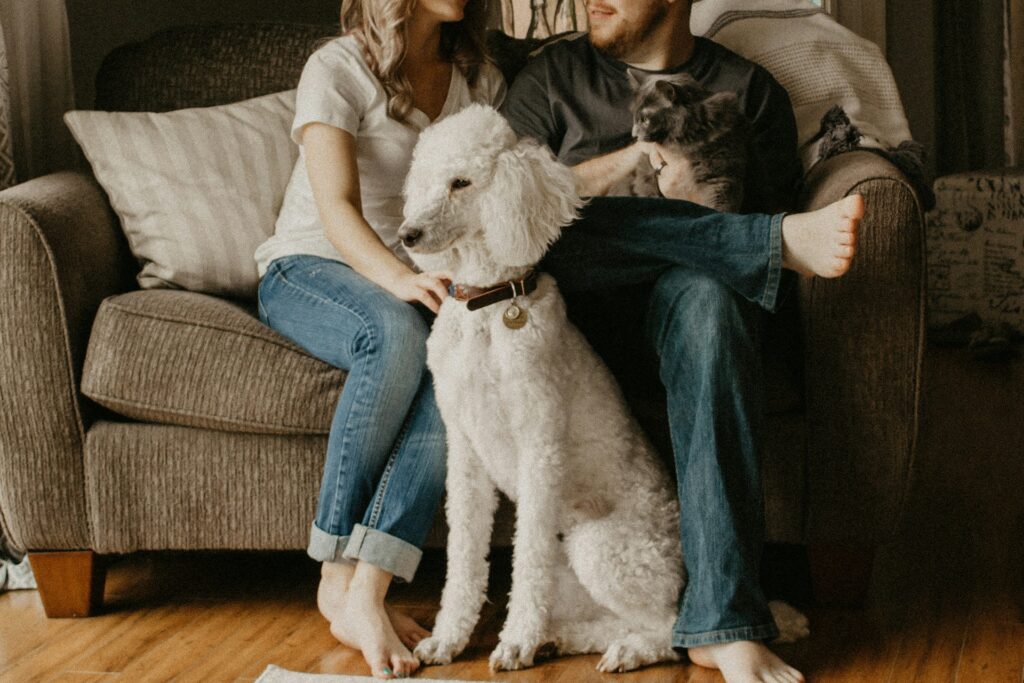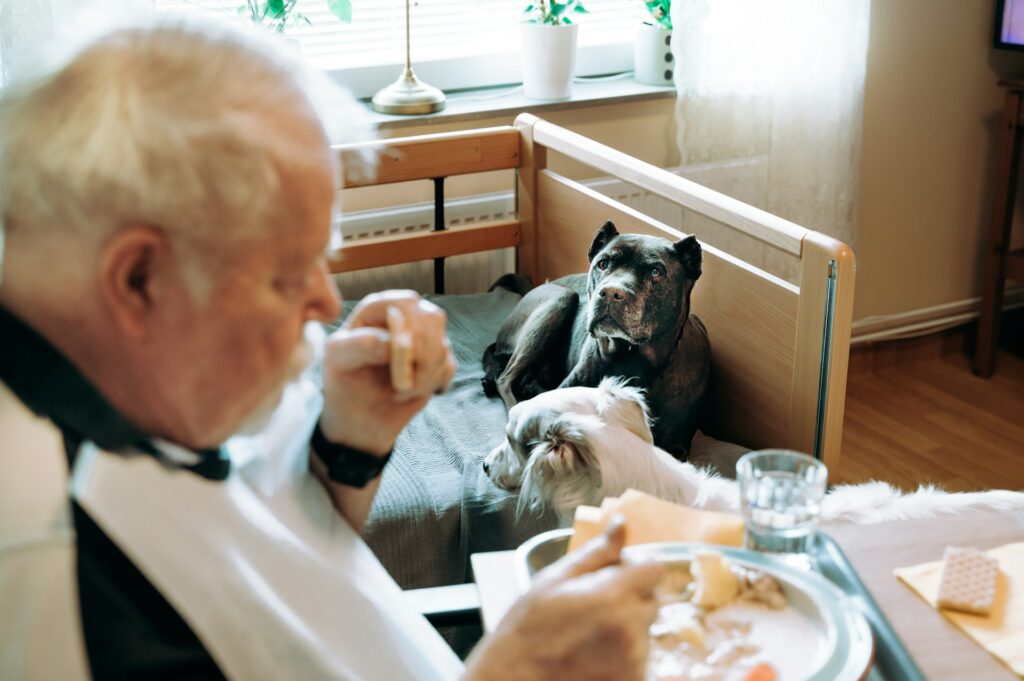Bringing a new pet into your home is one of those moments that can be both joyful and slightly nerve-racking.

Whether it’s a playful puppy, a curious kitten, a rehomed rescue, or even a more unusual companion like a rabbit or lizard, the anticipation is huge. But for all the excitement, there’s also a fair bit to consider. It’s not just about whether your current pets will get along—it’s about ensuring the whole household feels calm, safe, and prepared for the change.
Pets, like people, need time and space to adjust to new surroundings. A well-handled introduction sets the tone for how well they’ll settle in and build positive relationships—both with the humans in the home and any other animals they might be joining. A bit of planning goes a long way, and taking the right steps early on can help prevent stress, confusion, and potential conflict down the line.
Prepare your home before they arrive.

Before your new pet steps through the door, it’s important to have everything ready to make their arrival as smooth and stress-free as possible.
Create a designated space: Set up a quiet, comfortable area just for them. This could be a separate room, a large pen, or even a sectioned-off corner of a room with a bed, blankets, food and water bowls, and a few toys. The idea is to give them a secure place to decompress without being overwhelmed.
Pet-proof the environment: Check your home from a pet’s-eye view. Remove any choking hazards, make sure cords and wires are tucked away, and double-check that windows, balconies, fences, and gates are secure. Toxic plants, cleaning products, and small objects should all be out of reach.
Have essentials ready: Stock up on everything you’ll need: food, treats, grooming supplies, bowls, litter trays (if applicable), toys, and bedding. If your pet is coming from a foster home or shelter, ask what type of food they’ve been eating and what their routine has been like to help with a smoother transition.
Consider scent items: Familiar scents can ease anxiety. If you can, bring something from their previous environment that smells like home—a blanket, toy, or item they’ve used. It can act as a comfort while they settle into a new space.
Introductions take time, so go slow.

It’s tempting to dive right into full introductions the minute your new pet arrives, especially if you’re excited or if children in the home are eager to meet them. But taking things slowly is the best approach—for everyone involved.
Start small: Let your new pet adjust to one part of the house before giving them free rein. Gradually increase access as they become more comfortable. A slow rollout gives them a chance to build confidence without feeling overwhelmed.
Use barriers when necessary: Baby gates, playpens, or crates can help manage early introductions to existing pets or young children. This creates structure and keeps initial meetings short, calm, and under control.
Watch body language carefully: Look for subtle cues from all animals. Curiosity, tail wagging, and sniffing are usually positive signs. Stiff posture, growling, hiding, or avoidance mean it’s time to pause and reassess.
Keep routines consistent: Maintain regular feeding, walking, and bedtime routines for your existing pets. Familiar schedules provide a sense of stability and help reduce the chances of jealousy or territorial behaviour.
Use scent before sight.

Smell is one of the most powerful senses for cats and dogs, and it can play a huge role in introductions.
Swap bedding or toys: Before letting your pets meet face to face, exchange blankets or toys between them. This helps both animals become familiar with each other’s scent in a non-threatening way.
Use scent cloths: Gently rub a soft cloth on your new pet and leave it near your existing pet’s favourite spot—and vice versa. Over a few days, this helps desensitise them to each other’s presence.
Let scent exchanges happen repeatedly: Don’t rush into a face-to-face meeting after one swap. Let scent introductions play out over several days if needed—it builds familiarity and trust.
Try supervised, gradual interactions.

Even if your pets seem curious or relaxed around each other, it’s important to supervise all early interactions. Things can change quickly, especially in unfamiliar or high-energy moments.
Start with brief, structured visits: Keep the first few meetups short and calm. Use leashes, crates, or gates to provide control, and end the session on a positive note—ideally before anyone shows signs of stress.
Provide clear escape options: Especially with cats, having access to high perches or safe hiding places can help them feel secure and give them a sense of control.
Keep them separate when unsupervised: Until you’re completely confident that everyone is comfortable and relaxed, don’t leave new and existing pets alone together.
Understand their individual needs.

Different animals respond differently to new situations, and their past experiences will influence how they react to change. You may not even know their past experience, especially if you’ve rescued or adopted the animal, so it’s important to show empathy, understanding, and acceptance of their way of doing things.
Young animals may be more adaptable but still need boundaries and consistent handling.
Older pets might struggle more with changes to their environment or routine. Be patient and make introductions gradual.
Rescue pets often come with unknown histories. Give them plenty of time, and be sensitive to signs of anxiety or fear.
Take time to learn about your new pet’s background, temperament, and triggers. Offering structure, predictability, and reassurance can go a long way towards helping them settle.
Make it a family effort.

If you live with other people, make sure everyone’s on the same page. Set clear rules about how and when to interact with the new pet. Younger children should always be supervised and taught to respect the pet’s space and body language. Gentle handling, calm voices, and short sessions work best.
Encourage family members to take part in feeding, walking, or playing with the new pet. It helps build bonds and makes the new arrival feel like part of the pack.
Know when to get help.

Despite your best efforts, not all introductions go smoothly. If you notice persistent growling, aggressive behaviour, or signs of stress like hiding, loss of appetite, or toileting issues, don’t wait to get help.
Speak to your vet: They can rule out any medical causes and give advice tailored to your specific pets.
Consider a behaviourist: A qualified animal behaviourist can work with you to develop a step-by-step introduction plan that works for your household.
There’s no shame in asking for guidance—sometimes a fresh perspective can prevent problems becoming more serious.
Remember that you’ll be just fine.

Introducing a new pet to your household is a big moment, and it’s worth doing right. With a bit of thought, patience, and sensitivity, you can help everyone settle in smoothly and safely. Take your time, read your pets’ signals, and celebrate small wins as they get to know one another.
Every household and animal is different, so don’t expect it all to go perfectly. But with a calm approach and a solid plan, you’ll be well on your way to building a happy, harmonious home—where everyone, new and old, feels like they belong.